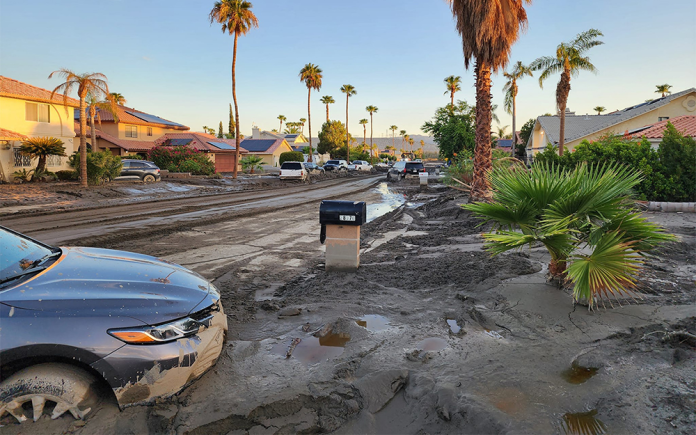
By Fire Chief Sam DiGiovanna
Though the heavy rains have subsided, more rain is in the forecast. However, the danger will lurk with mudflow and erosion problems. Make sure you are prepared reminds Fire Chief Sam DiGiovanna!
In the next few days, you might find your home and property damaged and you’ll be wondering how do I get this put back together?
Where do I start?
Safety First!
If recent rains flooded your home, or you’ve noticed movement in retaining walls, house cracking/shifting, slopes seem to be moving, wind damage, power failures etc. can pose serious dangers. Structural and interior damage, live power lines, mold and open areas of your house can all put you at risk. If damage is severe enough, you may need to leave your house until you are able to evaluate the damage.
Friends or family:
Consider going to an emergency shelter, staying with friends and family, or staying at a hotel until you’re able to get an inspector to your home. Take a few days’ worth of clothing and supplies, if possible, but prioritize safety above collecting your possessions. Nothing is worth being injured or killed. Everything is replaceable however your life isn’t!
Insurance Policy:
Check with your insurance company and find out what your policy covers. They may provide someone to inspect your home for safety hazards, or you may need to hire someone (make sure they are licensed and qualified), but in either case, you should have your home checked for hazards before you return.
Local, State or Federally Declared Disasters:
The Federal Emergency Management Agency provides a variety of assistance to victims of storm damage. If a local, state or federally declared disaster is declared, you may be eligible to get help with temporary housing, with repairs, with meals for your family and with filing insurance claims. Contact the FEMA branch in your area.
What you can do when it is safe:
Document Damage:
You’ll need to document the damage that has been done by the storm as soon as possible, particularly if your homeowner’s insurance only covers certain types of damage. Take photos of the damage, and be sure to document any potential problems, such as structural or interior damage, mold, crumbling drywall or exposed power lines. It’s a good idea to have pictures on file of the normal state of your house.
Safety First When Documenting Damage:
When documenting damage, danger still may be eminent. Ground movement, pipes breaking, electrical lines, unstable structures can cause injury even after the storm. Use caution, do not touch any power lines, if you smell gas, leave the area ASAP, where sturdy boots, gloves and hardhat.
There will be more storms following recent storms. Remember; if you’re concerned about a storm that hasn’t hit yet, take photos both before and after the storm.
Many homeowner’s insurance policies won’t cover flood damage, so if your home has flooded, contact your flood insurance company instead. If you don’t have flood insurance, you might be stuck paying for the damage yourself.
You can contact a disaster clean-up company to come in and evaluate your home and begin the post-flood clean-up process.










































